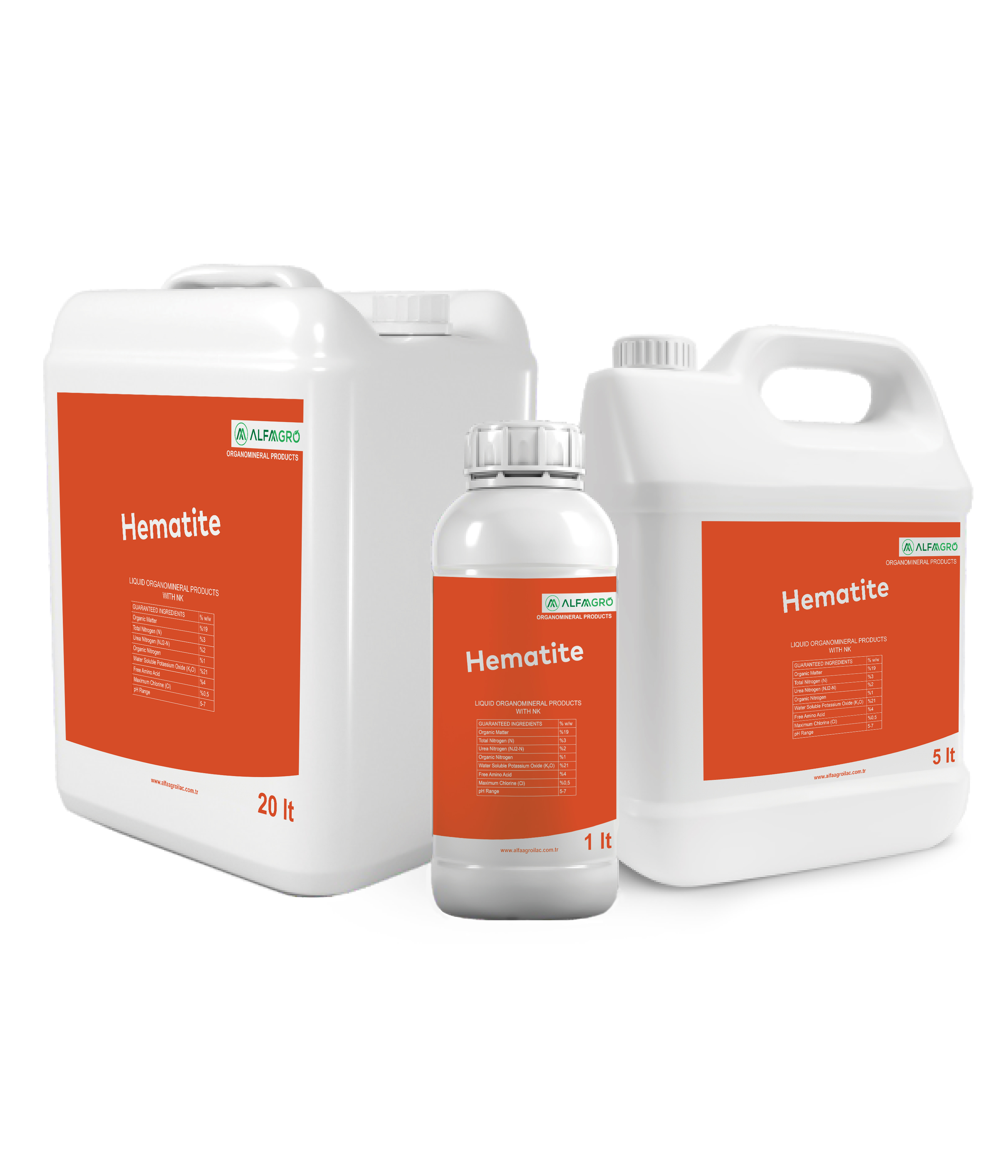
Alfa Agro
Hematite
Liquid Organomineral Products with NK
| Guaranteed Content | w/w % |
| Organic Matter | 19% |
| Total Nitrogen | 3% |
| Urea Nitrogen | 2% |
| Organic Nitrogen | 1% |
| Water Soluble Potassium Oxide | 21% |
| Free Amino Acid | 4% |
| Maximum Chlorine | 0.5% |
| pH Range | 5-7 |
PROPERTIES AND MODE OF ACTION
Hematite is a liquid organic fertiliser containing amino acids of animal origin and contains free amino acids and long and short chain peptides in an optimal ratio and in a very well balanced manner. Hematite is used both in the form of irrigation water and foliar application and due to its very high total solubility in water, it is rapidly taken up by plants and systemically transported to all plant parts.
Hematite increases plant resistance to potassium diseases, drought and salt damage. It regulates starch, sugar formation and water consumption in the plant, and prevents decreases in product yield and quality.
APPLICATION TYPEA
Hematite can be used foliar, soil and irrigation water. Although the number of applications depends on the condition of the plants, the most appropriate application times are during planting, development, flowering, fruit set and ripening, when the vegetative activity is the highest.
In general terms, foliar applications should be carried out at doses of 200-250 ml/100 litres of water when the plants are most sensitive and 400 ml/100 litres of water should be applied when frost is observed. In soil applications, drip irrigation system should be preferred. During the entire vegetation of the plants, at least 4 applications should be made at a dose of 300-400 ml/da.
No residue problem, no risk of pollution and contamination.
POINTS TO BE TAKEN INTO CONSIDERATION WHEN USING
Hematite can be tank mixed with all fertilisers, chelates and most plant protection products. It should not be tank mixed with more than two other products. Mixtures with mineral oils and nitro derivatives such as DNOC should be avoided. Tank-mix applications can be made without risk with copper-containing fungicides on olives, cereals and onions. In tank mixtures with both sulphur and copper compounds, preliminary tests should be carried out on the target crop and reactions should be observed in the days following the application. In cases where the application of copper compounds is mandatory, it should be done 3-4 days after the Hematite application.


